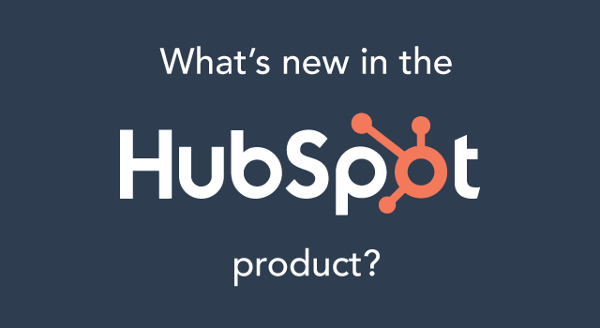When a software or interface is deemed “intuitive,” it’s what most people would call “user friendly.” But how in the world can we make customer service user friendly? Most people have the idea that the best customer service is defined.

For example, imagine a customer calls your company’s support line. They speak to you about their issue, and then, by some service magic, you make their problem disappear. Sounds ideal, right?
Well, maybe not.
The act of calling a customer service line, waiting through an automated phone tree, and articulating a complex problem can actually be more than most people are willing and ready to do.
Think about it: A customer is a person, just like you. They have busy lives, full-time jobs, and very limited free time to wait on hold for support. Then there’s also the possibility that some customers just don’t feel comfortable talking on the phone and would prefer assistance via a different channel. It isn’t a far-fetched idea. Microsoft surveyed 5,000 individuals in their 2018 State of Global Customer Service Report and found that nearly two-thirds of them preferred to tackle their problems on their own before reaching out for help.
This trend is even more prevalent among millenials. O2, a European telecommunications company, states that “telephone" apps on smartphones—that is, using your phone to make actual phone calls—are only the fifth most-used app among the general public.”
So even if you fix their problem magically over the phone, they'll still feel inconvenienced. Other than having a perfect service or product (which is of course impossible), what can you do?
You learn what they need and give them the tools to succeed on their own—in other words, to self-serve.
Now that’s not to say you pick up the phone, tell them to figure it out, and go about your day. Instead, you analyze their behaviors — on your website, on your service team’s calls, in your reviews online — and give them the answers to their questions before they ever become a problem. If you’re a HubSpot user, you already have all the resources to do this.
Knowledge Is Power
If you’ve ever used the internet to check out a company, you’ve probably visited an FAQ page. This page essentially will be a neatly organized set of clickable links, which are made up of the most common questions the company receives. It will look similar to this here:

When you click on a link that seems relevant to your problem, your answer appears. For common and simple questions, this is an easy page to set up and will provide the customer with the means to find their own answers, or self-serve. They don’t have to call you or jump from page to page on your website looking for their answer.
If you’re a Service Hub user, you have access to a knowledge base that you can put together. This feature is easy to use. Simply log in to your HubSpot account, click on Service in your HubSpot toolbar, and select Knowledge Base.

From here, gather your information and analytics. Make sure to ask your customer service team — they’ll be able to provide you with their most common questions.
Then organize your categories, and add your questions and answers. Here’s a snapshot of a question and answer for reference:

This will create a clickable question on your FAQ page. FAQ pages are often the first place a customer will go to find an answer to their problem
But don’t be fooled: FAQ pages aren’t just for customers. In addition to helping customers who you’ve already obtained, FAQ pages play an important role for those considering your product or service.
Before a customer decides to reach out to you via email or chat, they oftentimes visit your website, cruising your pages and forming opinions of your brand. If they land on your FAQ page in an attempt to know your inner workings better, it’s important to make sure the page is organized, that there are no glaring typos, and that all questions are answered with customers and leads in mind.
Gathering Customer Feedback
So let’s say you have a polished knowledge base full of helpful FAQ articles published for your customers and leads. That’s a great start toward intuitive customer service, but you’re not finished yet. You have to let your customers weigh in on their service experiences with your company. And there’s a Service Hub tool for that, too.
You’ve probably received a receipt from a restaurant or store that encourages you to go online and fill out a survey of your experience. Sometimes, they’ll even incentivize you with a discount or chance to win prizes. It seems like a bit much.
But when you stop to consider how valuable customer feedback is to improving a company’s success, incentives really aren’t over the top.
What’s important to understand about customer surveys and feedback is that it’s vital to staying relevant. You can’t succeed unless your customers succeed. Continually improving your interactions with customers should be your endgame, and communication matters. Using the Service Hub feedback tool, you can reach out to your specific lists in your HubSpot CRM and ask them valuable questions in the form of a survey, such as if they would recommend you to people they know.
There are three options to choose from:
- Customer loyalty survey: Use this survey to find out if customers would recommend you. Did you provide some type of ongoing consulting services to a customer and are wondering if they’ll spread the good word about you to friends? Ask them with a customer loyalty survey.
- Customer support survey: Use this survey to measure a customer’s experience with your customer support/service team. Your customer service reps will have lots of interactions, and you don’t want to make the assumption that all interactions are perfect. Use a customer support survey so that you can hear from each customer about the quality of their support interaction. It’s a great way to make sure your customers feel heard — after all, they’re people, not ticket numbers.
- Customer experience survey: Use this survey to inquire about any specific customer service issues. Did you change up your website and are wondering if your customers dig the new look? Did one of your customers purchase a new product from you, and you want to know how they liked it? It’s possible to ask these questions, in your own words, using a customer experience survey.
The better you know your customers and their feelings towards you, the better you can cater to them and to future customers like them.
Using HubSpot’s Ticketing System to Centralize Your Customer Needs
Using a ticketing system is nothing new in the tech world. Many companies that have technical support departments use these types of systems to keep track of or queue requests from other departments or customers.
With the tickets tool in your Service Hub account, you can create a landing page for your customers. This landing page allows your customer to put their information and requests in — which you can then set up to trigger a workflow. The workflow will let them know their request has been received, and give them any other relevant information they’ll need to continue forward in the process.
Being able to centralize the requests of your customers, especially if you’re juggling more than a few, is extremely valuable from an organizational standpoint.
Tickets can also be created manually. Say you received a request from a customer, and it’s not something you can get to immediately. You can create a ticket yourself for follow-up later, and if you need to delegate some of these tasks to other team members, you simply assign the ticket to them.
The team member you assign it to will then get a notification email informing them that they have something to complete. You can see where a request came from in HubSpot by navigating to Service > Tickets and looking at the Source column. It will look like this:

The goal is to have all your customers’ needs met without ever having to take additional time out of your schedule or theirs. The ticket system will catch all the needs that can’t be immediately satisfied by your super user-friendly website.
Solve for the Customer — Always
Your customers’ successes and failures are your successes and failures. So take care of your customers with an intuitive customer service experience where they can serve themselves if they choose to or reach a human easily if needed.
And don’t forget about sending feedback surveys so that you can celebrate your customers’ wins, address their losses, and continue strengthening your company’s customer service. If you’re a Service Hub user, you have all the tools you need to get started.
So what are you waiting for? It’s time to log in to Service Hub and use your tools to empower your customers with knowledge and free up your team’s time to keep innovating. So jump in and stand out in the customer service world!
Want to connect with others on HubSpot tips, tricks, and updates? Head over to the HubSpot Community to join a conversation or start one of your own.









